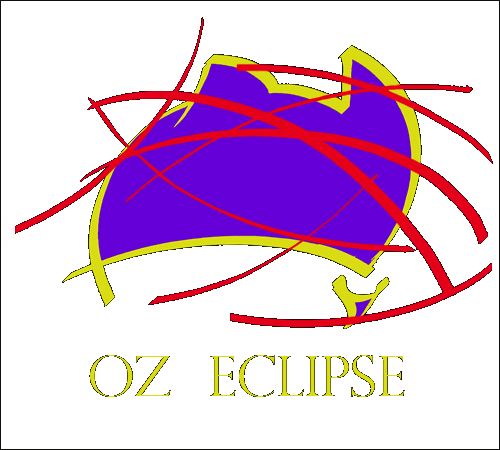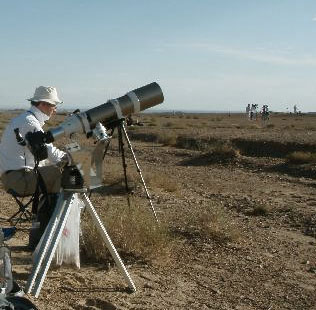
 |
WAITING FOR THE
SHADOW
SOLAR AND LUNAR ECLIPSE OBSERVINGHOME PAGE |
|
|
|
|
|
|
|
|
|


 TLE August 2007
TLE August 2007 TSE2008 Gansu Province NW China
TSE2008 Gansu Province NW China I
again modified the lightweight equatorial(LEQ). The dec became a
single arm fork mounting. The RA stayed the same as it had for the past
7 years. I mounted the ED80mmf7.5 on the LEQ. I used a
digital camera for the first time at a solar eclipse. A Pentax
K10D. The K10D has 5 stop auto bracketing. I began building an automated interface for the k10D but since using
the auto bracketing, I've stopped working on the computer
interface. I can shoot a full shutter speed sequence from 1/4000s
- 4s in less than 40 s. I also extended my wide
angle photography to include a time lapse sequence showing the shadow
crossing the sky. This
was also the first eclipse where I attempted video imaging. My video
camera was fitted with an ultra wide angle adapter 140 degree
horizontal field. Unfortunately I forgot to lock the focus to manual so
the AF went hunting in the low light of totality.
I
again modified the lightweight equatorial(LEQ). The dec became a
single arm fork mounting. The RA stayed the same as it had for the past
7 years. I mounted the ED80mmf7.5 on the LEQ. I used a
digital camera for the first time at a solar eclipse. A Pentax
K10D. The K10D has 5 stop auto bracketing. I began building an automated interface for the k10D but since using
the auto bracketing, I've stopped working on the computer
interface. I can shoot a full shutter speed sequence from 1/4000s
- 4s in less than 40 s. I also extended my wide
angle photography to include a time lapse sequence showing the shadow
crossing the sky. This
was also the first eclipse where I attempted video imaging. My video
camera was fitted with an ultra wide angle adapter 140 degree
horizontal field. Unfortunately I forgot to lock the focus to manual so
the AF went hunting in the low light of totality.